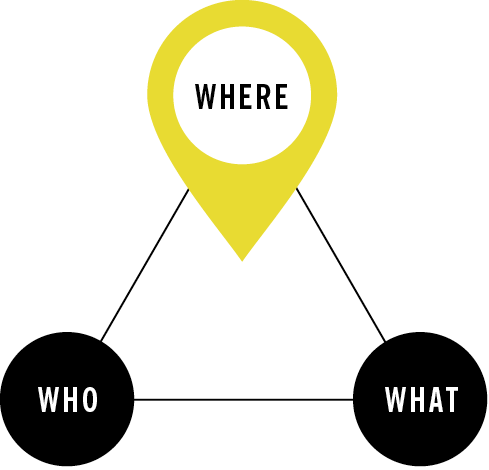BUSINESS AND PROCESS ANALYSIS (BPA)
Business and process analysis is a topic we’ve discussed many times across different issues of The Jabian Journal. But for those just tuning in, BPA is about identifying business needs or problems, then determining solutions built on a strong foundation of business processes. But how does BPA change—if at all—to support the mobile world?
From a user experience perspective, BPA focuses on defining the “what” and the “who.” Who is the user? What action are they performing? Who is responsible for the task? What does the task involve? This could be a worker on an assembly line or a customer service representative who triages phone calls.
As a concept, the “why” of BPA is to bring clarity, reproducibility, and quality to a process by clearly and concisely establishing what should happen and who should do it. One way to do this is through business process flows. Process flows visually show who is doing what and the order in which they are doing it (the “when”). As you identify and define requirements, you can always trace back to the underlying business process to provide context and structure for the overall solution.
Now that we’re on the same page with BPA, how does it change when applied to a mobile user or solution, and why would it be different? Mobile technology changes quickly. It can be viewed and defined through many lenses. Let’s not assume mobile is any particular technology set. Instead, let’s assume mobile technology encompasses anything that enables people to be mobile. Mobile phones, tablets, watches, Internet of Things, laptops, hotspots, wireless headsets, etc.—all of these technologies enable people to interact in ways they couldn’t in the past.

FOCUSING ON THE “WHERE”
If, at its core, BPA focuses on defining the “who” and the “what,” BPA for mobile is all about defining the “where.” Where is the action taking place? Is it taking place in an office, outside during winter, or in the passenger seat of a truck?
Examples
For example, an airline redesigned its mobile app to focus on the “where” after realizing customers primarily use it in the security line while trying to pull up a boarding pass. With this understanding of where their users were, they were able to streamline the experience and allow customers to access their boarding pass faster and easier.
Another example: An automotive company redesigned a mobile inventory application for employees to account for where they were using it. Because employees used the app outside, in all types of weather, designers used high contrast to improve visibility in direct sunlight and incorporated styluses to navigate touch screens in cold weather.
A trucking company might take into account that their drivers shouldn’t be using mobile devices while driving and include voice alerts instead. A fitness tracking company might choose to pull up nearby healthy food options for customers who are tracking their calorie consumption after a workout. A to-do list app might focus on the where and trigger alerts and reminders if the customer is close to a particular location. For example, if you’re passing a pharmacy, your mobile device may remind you to stop and pick up a prescription.
Keep this in mind the next time you’re analyzing a business process with a mobile component: Where is the action taking place? Where are your users? It might just change the direction you take. It might just help you better understand your users and build the best solution for them.
